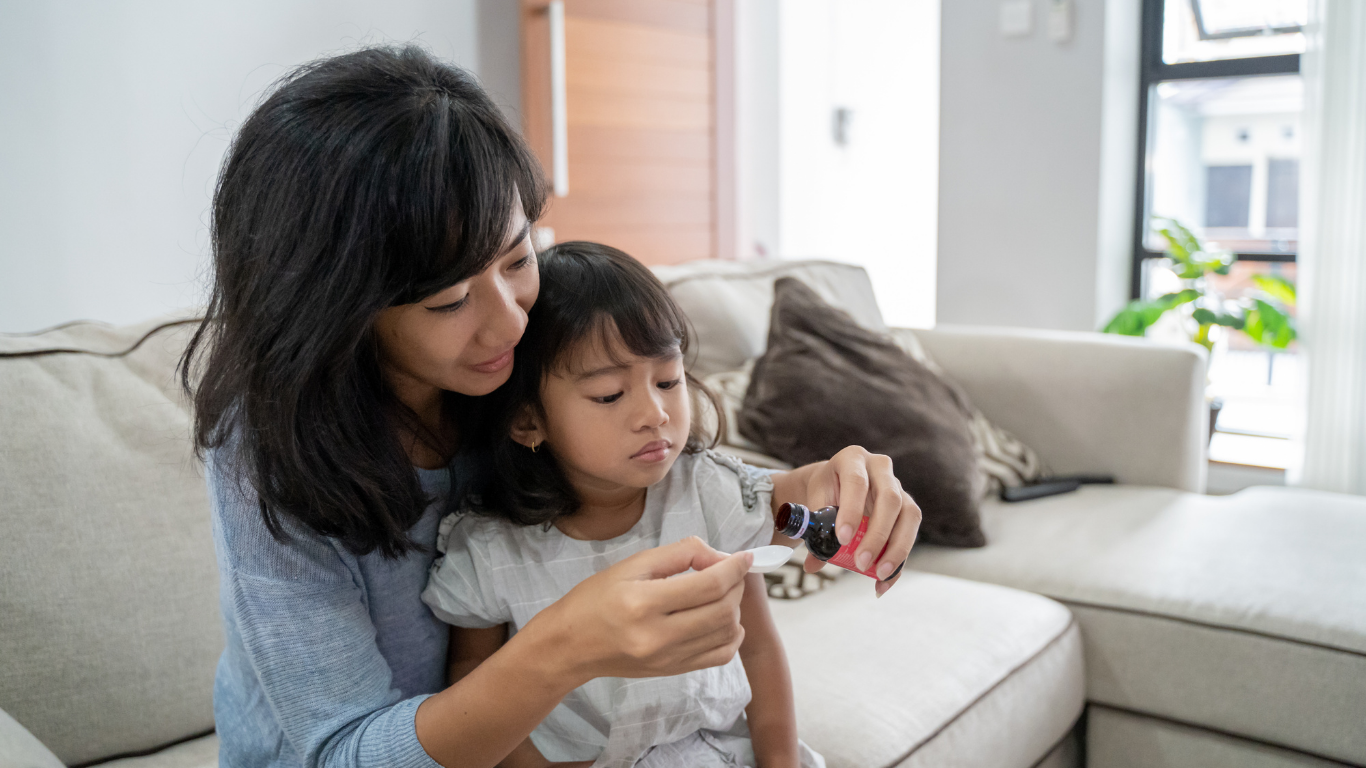
Author: Emilie Touma, BA; Sharoon Qaiser, MD, MBBS
University of Kentucky College of Medicine, Lexington, KY
Reviewed: January 2022
SUMMARY
Occipital neuralgia (ON) is a headache disorder that causes shooting or stabbing pain in the back of the head.
The word “occipital” refers to the back side of the head. The word “neuralgia” means nerve pain.
This type of headache is not common. Fewer than 3 in 100,000 people experience ON every year. However, in many cases, it may stay undiagnosed.
ON is thought to be even more rare in children. Statistics about ON in children are unknown at this point in time.
JUMP TO
Disorder Overview
DESCRIPTION
Occipital neuralgia is a specific type of headache. It is located in the upper neck and upper back of the head.
A headache due to ON will begin suddenly. It will begin with a brief, piercing or shock-like pain that spreads upward to the top of the head. ON may be felt on both sides of the head, or on just one side. Typically, the headache waxes and wanes throughout the episode. In addition to the headache, ON may cause sensitivity to light and scalp tenderness. Children who experience ON may also have migraine headaches or other types of headaches.
Occipital neuralgia, while uncomfortable, is not a life-threatening condition. The cause of ON is thought to be compressed nerves in the neck and spine. However, the exact cause of a patient’s ON headaches is not always known.
A patient may experience some relief after treatment with:
- Rest, conservative treatments
- Other treatment options
- Nerve blockade injections
If initial treatment does not work, doctors will be able to recommend alternative options to help manage the pain.

SIGNS AND SYMPTOMS
Pain in Occipital Neuralgia
Occipital neuralgia is associated with sudden, severe pain in the back region of the head. The pain may be:
- Shooting
- Stabbing
- Sharp
- Like an electric shock
The pain is described as severe. It may cause significant discomfort for the patient.
Patients with ON may also experience the following in the occipital region:
- Tenderness
- Numbness
- Decreased sensation
Tenderness, numbness, and decreased sensation may be experienced with or without headache symptoms.
Location in Head
The back side of the head is supplied by many nerves. Some of these nerves can contribute to ON. The pain of ON occurs in the area supplied by three occipital nerves:
- The greater occipital nerve
- The lesser occipital nerve
- The third occipital nerve
Each ON attack may be on one or both sides of the head. The back of the head is the most common area for pain. However, pain may be felt in the neck or forehead, or behind the eyes.
Timing
Each attack of stabbing or shooting pain may last from a few seconds to minutes. The frequency of these episodes varies. Multiple attacks in a single day are possible.
In some cases, an attack can be triggered by pressing the upper part of neck on the same side.
Describing Occipital Neuralgia
Note: Not all of the symptoms listed above are present during every ON headache episode. It can be a challenge for neurologists to distinguish between occipital neuralgia and other headache types. Therefore, it is important to give them:
- The length of the headache
- A description of the way the pain felt
CAUSES
The exact cause of occipital neuralgia remains unknown. It is thought that irritation of the nerves that supply the back of the head contributes to ON. There is usually no clear cause of the nerve irritation. However, it is thought that:
- Nerves may be irritated anywhere along their course, from their point of origin to their insertion in the scalp.
- In some cases, the nerves get entrapped in the neck and scalp muscles.
- Inflammation, infection, surgery, or trauma in the head or neck may contribute to nerve irritation.
LABORATORY INVESTIGATIONS
Diagnosing Occipital Neuralgia in Adults and Children
Occipital neuralgia is a clinical diagnosis in adults. This means that doctors can usually make a diagnosis using only:
- A detailed patient health history
- A physical exam
Bloodwork, imaging, and other lab investigations are not required to make a diagnosis in adults.
However, this is not the case for children. ON is quite rare in children. The International Headache Society suggests testing and imaging to rule out other causes of occipital pain.

Imaging in Occipital Neuralgia
Taking pictures of the head is the best and most common way to investigate these headaches in children. This can take two forms:
- Magnetic resonance imagining (MRI). This is considered the superior option for looking for causes of ON. MRI is safe. It includes no risk of radiation. It may require sedation in younger children.
- Computed tomography scan (CT scan). If pictures of the head reveal concerning findings, more testing may be needed.
TREATMENT AND THERAPIES
The treatment of most headaches can be divided into three categories:
- As-needed treatments
- Preventative treatments
- Alternative treatments
For occipital neuralgia treatment, no hard guidelines exist. This is due to a lack of adult and pediatric studies. However, the treatments outlined below can help manage the pain of ON attacks. All treatments should be discussed with a medical provider.
As-Needed Treatments
As-needed treatments help treat a headache while it is occurring. However, attacks of ON are usually brief and self-limiting. Over-the-counter pain medicines are therefore not suggested for these headaches.
Preventative Treatment
Conservative Treatments
A few children may experience neck tightness in between attacks of ON. Using simple measures like heating pads, massage or physical therapy may provide some relief. In some cases, anti-inflammatory medications may be used for a short period of time.
Occipital Nerve Block
The first preventative treatment usually tried for ON is an occipital nerve block. The goal is to block the pain signals that may contribute to ON headaches. A nerve block can provide immediate or extended relief. A nerve block injection will include:
- A steroid. The most commonly used steroid is dexamethasone.
- A numbing medicine. The most commonly used anesthetic (numbing) agents include:
- Lidocaine
- Bupivacaine
An occipital nerve block is performed by a specialist trained in this procedure. This specialist will inject specific areas supplied by:
- The greater occipital nerve
- The greater and lesser occipital nerves
If the block works, it may also help to confirm the diagnosis.
Side effects of this procedure can include:
- Pain at the injection site
- Infection
- Bleeding
It is important to note that an occipital nerve block does not cure ON. Instead, it acts as a temporary prevention tool. Those who respond to the nerve block may require multiple nerve blocks a year to continue to benefit from it. The response to this treatment varies from patient to patient. Some may remain headache-free for a period of days. Others may remain headache-free for weeks.
Oral Medicines
In some cases, patients do not benefit from an occipital nerve block. In other cases, they are not comfortable with injections. In these cases, they may be prescribed oral medicines.
There is no strong evidence that oral medicines are effective in occipital neuralgia. However, there is some evidence that some common headache medicines can help. These medicines include:
- Gabapentin
- Pregabalin
- Amitriptyline
- Nortriptyline
- Oxcarbazepine
These medicines are usually tolerated by patients. This means that the side effects do not cause patients to stop taking the medicine. Side effects include:
- Sleepiness
- Dry mouth
- Dizziness
- Electrolyte imbalance
These medicines may require occasional blood work. The blood work will check electrolyte levels.
Some patients will respond to these medicines and tolerate them well. These patients can continue to take oral medicines over a period suggested by a neurologist.
Alternative Treatments for Occipital Neuralgia
Some patients may not respond to or tolerate a nerve block or oral medicine. These patients may be offered alternative treatments. Alternative treatments are usually offered in a specialized center. There is no conclusive evidence that they are effective for ON. However, they are used for other headache types. For this reason, they may be used for ON, too.
Alternative treatments include:
Botulinum toxin type A
BTX-A is a natural neurotoxin. While it does not cure ON, it can change the way nerves process pain signals. Some patients with ON seem to benefit from BTX-A. This is especially true if they have additional types of headache disorders.
This treatment is approved by the United States FDA for treating chronic migraine in adults. In children ages 12 and above, there is some evidence that it helps in relieving pain in chronic migraine.
The procedure involves many injections sites across the entire head, neck, and forehead. The most common side effects include:
- Injection site pain
- Bleeding
- Infection
In some cases, this treatment causes temporary muscle weakness. Weakness may improve after 3 months.
Injections need to be given every 3 months. Those who respond may require injections over a long time.
This is a specialized procedure. Only doctors who are trained in this procedure can perform it.
Pulsed radiofrequency treatment
Radiofrequency treatment targets and destroys tissues using a radiofrequency current. A pulsed radiofrequency current uses short but high voltage bursts. It produces less tissue damage and fewer side effects than other forms of this treatment.
In PRF treatment for ON, the occipital nerves are targeted. In a study comparing PRF to an occipital nerve block procedure, PRF provided patients with more relief. However, pain relief from PRF was found to be short term. It only lasted up to 6 weeks.
Neuromodulation
Occipital nerves can be stimulated by a process called neuromodulation. There are various devices that can be used for this process. The devices may send magnetic or small electric signals to activate nerves that supply the scalp.
Neuromodulation is approved for various headaches in children. It has minimal side effects. However, it is not clear if those with ON can benefit. This treatment does not cure ON, and those who respond may require frequent use of the device.
Surgical Decompression of Occipital Nerve
In some cases, occipital neuralgia is caused by compression of the occipital nerves. In these cases, a very specialized surgeon may be able to decompress the nerves.
This is not a commonly performed procedure. It requires highly specialized doctors who perform surgeries on nerves and the brain. This procedure is reserved only for those patients who:
- Have failed in all other treatments
- Have severe pain attacks affecting their quality of life
However, those who respond may have long-term pain relief.

OUTLOOK
Occipital neuralgia attacks may cause significant problems for children. This can happen if attacks are frequent and occur throughout the day. Children with ON may not be able to keep up with school performance or social activities. However, since most attacks are brief and occur without any trigger, educational accommodations are not usually offered.
Occipital neuralgia may accompany other headache disorders in children. A healthy lifestyle can help prevent headaches in general. Headaches, including ON, may be prevented with:
- Good hydration
- Regular exercise
- A healthy diet
Patients who respond to an occipital nerve block may experience relief lasting from weeks to months. In some cases, alternative treatments may offer more permanent relief.
RELATED DISORDERS
The pain experienced in occipital neuralgia may be mimicked by other headache disorders. These include:
Cervicogenic headache disorder
Secondary pain from unrelated muscles
Tumors of the scalp, brain, and skull
Elongated cerebellar tonsils
Occipital neuralgia is not common, especially in children. Therefore, careful investigation is necessary to rule out other potential causes of occipital pain.
Resources
ORGANIZATIONS/GROUPS
Occipital Neuralgia Foundation
The Occipital Neuralgia Foundation (ONF) was formed to bring support to people suffering, to educate the public, and to foster research into the causes and treatments of Occipital Neuralgia (ON). In January of 2021, the ONF teamed up with Patients Rising, a non-profit that provides education, resources, and advocacy for people living with chronic and life-threatening illnesses. A survey was conducted to learn more about the ON community.
Working alongside the American Headache Society, the American Migraine Foundation’s mission is to mobilize a community for patient support and advocacy, as well as drive and support impactful research that translates into treatment advances for patients with migraine and other disabling diseases that cause severe head pain. The Occipital Neuralgia page touches on diagnosis and treatment. The website includes a Pediatric Migraine Resources section which includes videos, articles, and podcasts. AMF also hosts a private Facebook group, Move Against Migraine, with over 28,000 members.

The information in the CNF Child Neurology Disorder Directory is not intended to provide diagnosis, treatment, or medical advice and should not be considered a substitute for advice from a healthcare professional. Content provided is for informational purposes only. CNF is not responsible for actions taken based on the information included on this webpage. Please consult with a physician or other healthcare professional regarding any medical or health related diagnosis or treatment options.
Research
ClinicalTrials.gov for Occipital Neuralgia (birth to 17 years)
These are clinical trials that are recruiting or will be recruiting. Updates are made daily, so you are encouraged to check back frequently.
ClinicalTrials.gov is a database of privately and publicly funded clinical studies conducted around the world. This is a resource provided by the U.S. National Library of Medicine (NLM), which is an institute within the National Institutes of Health (NIH). Listing a study does not mean it has been evaluated by the U.S. Federal Government. Please read the NLM disclaimer for details.
Before participating in a study, you are encouraged to talk to your health care provider and learn about the risks and potential benefits.
Family Stories
Read stories from people living with Occipital Neuralgia on the Personal Stories page of the Occipital Neuralgia Foundation (ONF) website. Meet the Warriors of the week on the ONF Facebook page and ONF Instagram page.
References
Headache Classification Committee of the International Headache Society (IHS): The international classification of headache disorders, 3rd edition (beta version): Cephalgia 2013;33(9): 629-808.
Bogduk N. The neck and headaches. Neurol Clin. 2004 Feb;22(1):151-71, vii. https://doi.org/10.1016/S0733-8619(03)00100-2. PMID: 15062532.
Koopman JS, Dieleman JP, Huygen FJ, de Mos M, Martin CG, Sturkenboom MC. Incidence of facial pain in the general population. Pain. 2009 Dec 15;147(1-3):122-7. https://doi.org/10.1016/j.pain.2009.08.023. Epub 2009 Sep 26. PMID: 19783099.
Pingree MJ, Sole JS, Oʼ Brien TG, Eldrige JS, Moeschler SM. Clinical efficacy of an ultrasound-guided greater occipital nerve block at the level of C2. Reg Anesth Pain Med. 2017 Jan/Feb;42(1):99-104. https://doi.org/10.1097/AAP.0000000000000513. PMID: 27811528.
Lance JW, Goadsby PJ, editors. Cranial neuralgias and central causes of facial pain. In: Mechanism and management of headache. 7th ed. Philadelphia: Elsevier, Butterworth, Heinemann; 2005. p. 333.
Cohen SP, Peterlin BL, Fulton L, Neely ET, Kurihara C, Gupta A, Mali J, Fu DC, Jacobs MB, Plunkett AR, Verdun AJ, Stojanovic MP, Hanling S, Constantinescu O, White RL, McLean BC, Pasquina PF, Zhao Z. Randomized, double-blind, comparative-effectiveness study comparing pulsed radiofrequency to steroid injections for occipital neuralgia or migraine with occipital nerve tenderness. Pain. 2015 Dec;156(12):2585-2594. https://doi.org/10.1097/j.pain.0000000000000373. PMID: 26447705; PMCID: PMC4697830.
Ali SS, Bragin I, Rende E, Mejico L, Werner KE. Further evidence that onabotulinum toxin is a viable treatment option for pediatric chronic migraine patients. Cureus. 2019 Mar 29;11(3):e4343. https://doi.org/10.7759/cureus.4343. PMID: 31187008; PMCID: PMC6541167.
Jose A, Nagori SA, Chattopadhyay PK, Roychoudhury A. Greater occipital nerve decompression for occipital neuralgia. J Craniofac Surg. 2018 Jul;29(5):e518-e521. https://doi.org/10.1097/SCS.0000000000004549. PMID: 29762321.
Garza I. Craniocervical junction schwannoma mimicking occipital neuralgia. Headache. 2007 Sep;47(8):1204-5. https://doi.org/10.1111/j.1526-4610.2007.00887.x. PMID: 17883527.
